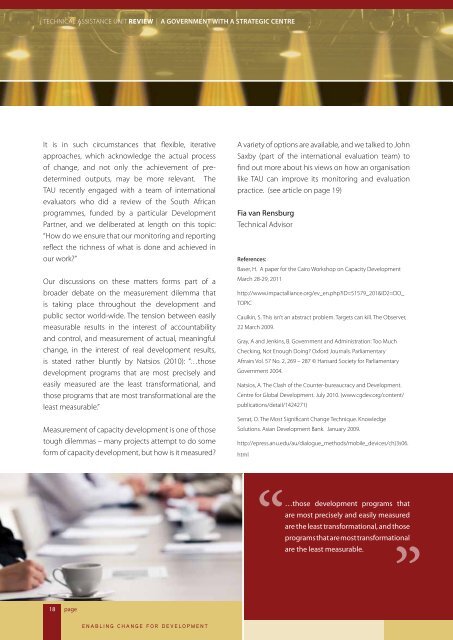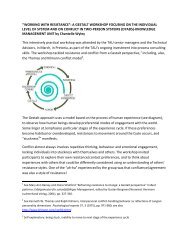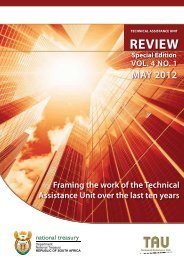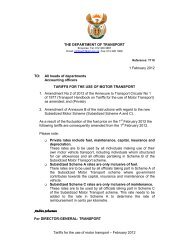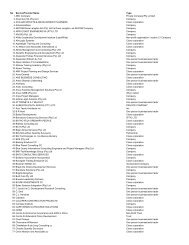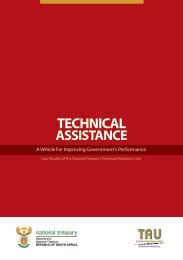Review 3 final 2 - TAU - National Treasury
Review 3 final 2 - TAU - National Treasury
Review 3 final 2 - TAU - National Treasury
Create successful ePaper yourself
Turn your PDF publications into a flip-book with our unique Google optimized e-Paper software.
TECHNICAL ASSISTANCE UNIT REVIEW | A Government with a Strategic Centre<br />
It is in such circumstances that flexible, iterative<br />
approaches, which acknowledge the actual process<br />
of change, and not only the achievement of predetermined<br />
outputs, may be more relevant. The<br />
<strong>TAU</strong> recently engaged with a team of international<br />
evaluators who did a review of the South African<br />
programmes, funded by a particular Development<br />
Partner, and we deliberated at length on this topic:<br />
“How do we ensure that our monitoring and reporting<br />
reflect the richness of what is done and achieved in<br />
our work”<br />
Our discussions on these matters forms part of a<br />
broader debate on the measurement dilemma that<br />
is taking place throughout the development and<br />
public sector world-wide. The tension between easily<br />
measurable results in the interest of accountability<br />
and control, and measurement of actual, meaningful<br />
change, in the interest of real development results,<br />
is stated rather bluntly by Natsios (2010): “…those<br />
development programs that are most precisely and<br />
easily measured are the least transformational, and<br />
those programs that are most transformational are the<br />
least measurable.”<br />
Measurement of capacity development is one of those<br />
tough dilemmas – many projects attempt to do some<br />
form of capacity development, but how is it measured<br />
A variety of options are available, and we talked to John<br />
Saxby (part of the international evaluation team) to<br />
find out more about his views on how an organisation<br />
like <strong>TAU</strong> can improve its monitoring and evaluation<br />
practice. (see article on page 19)<br />
Fia van Rensburg<br />
Technical Advisor<br />
References:<br />
Baser, H. A paper for the Cairo Workshop on Capacity Development<br />
March 28-29, 2011<br />
http://www.impactalliance.org/ev_en.phpID=51579_201&ID2=DO_<br />
TOPIC<br />
Caulkin, S. This isn’t an abstract problem. Targets can kill. The Observer,<br />
22 March 2009.<br />
Gray, A and Jenkins, B. Government and Administration: Too Much<br />
Checking, Not Enough Doing Oxford Journals. Parliamentary<br />
Afrrairs Vol. 57 No. 2, 269 – 287 © Hansard Society for Parliamentary<br />
Government 2004.<br />
Natsios, A. The Clash of the Counter-bureaucracy and Development.<br />
Centre for Global Development. July 2010. (www.cgdev.org/content/<br />
publications/detail/1424271)<br />
Serrat, O. The Most Significant Change Technique. Knowledge<br />
Solutions. Asian Development Bank. January 2009.<br />
http://epress.anu.edu/au/dialogue_methods/mobile_devices/ch)3s06.<br />
html<br />
…those development programs that<br />
are most precisely and easily measured<br />
are the least transformational, and those<br />
programs that are most transformational “are<br />
”<br />
the least measurable.<br />
18<br />
page<br />
Enabling change for development


